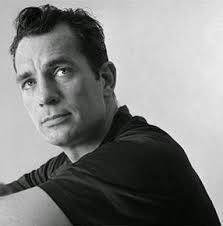Recently, I've compared narrative techniques across genres, from poetry to fiction to essay. What are the basic elements? A character, an action, a voice. In a poem, the images and sounds flash and beckon. In a story the energy, spark and flint, comes from the interaction between two characters. In essays, narration is freed from plot and can enter free-falls of association. Action frames the essay, but the action occurs on more than one level. Maybe poetry and essay are more closely related, or maybe the demarcations of all three genres are completely artificial.
Advice about writing abounds, and yet hardly any formula serves me at my desk. Don't get me wrong, I love to read the rules. These are the first five from Jack Kerouac's Rules for Spontaneous Prose:
1. Scribbled secret notebooks, and wild typewritten pages, for yr own joy2. Submissive to everything, open, listening3. Try never get drunk outside yr own house4. Be in love with yr life5. Something that you feel will find its own form
In these lines are the thrill of driving lines far into the night, accelerating, inebriated, exhausted. Poets also might nod agreement. And here are five from Kurt Vonnegut:
1. Use the time of a total stranger in such a way that he or she will not feel the time was wasted.
Empathy and desire, essential. We can all agree on the sensible nature of this advice. All writers should follow it, but these rules may not work.2. Give the reader at least one character he or she can root for.3. Every character should want something, even if it is only a glass of water.4. Every sentence must do one of two things — reveal character or advance the action.5. Start as close to the end as possible.
Zadie Smith said, "...writing is the craft that defies craftsmanship." Style, she says, derives from personal necessity. It is how the writer tells the truth.
Kerouac's rules worked for Kerouac, Vonnegut's for Vonnegut. The rules that work for you will be discovered in the midst of your writing, and may change the next time you sit down to write a new work.
Writers are better without formulas. And yet I will venture my rules:
1. Images visit and insist. Pay attention.
2. A rhythm comes. So does the landscape. Wait.
3. Bring it as far as you can, then push further.
4. Wild distraction may not be irrelevant.
5. Go back, go deeper, connect. Find context.
6. Mine: in the sense of test-drill and excavate.
I like the advice of Zadie Smith. Seek a "refinement of consciousness," like Aristotle's concept of the education of the emotions.
What rules are yours?
_________________
Find Kerouac and Vonnegut's advice, along with several other writers, at this website:
http://www.brainpickings.org/index.php/tag/creativity/
Smith, Zadie. "Fail Better." The Guardian. January 13, 2007. c2007. London, UK. Accessed October
3, 2011. http://faculty.sunydutchess.edu/oneill/failbetter.htm




Really great collection of rules. We all have inner rules when we write or make art. I like the way you note that Kerouac's worked for Jack and Volnnegut's worked for him but you had to have your own. Life is the process of peeling away all the advice that clouds us up so we can discover our own rules... Thanks... oh, and Zadie Smith is amazing.
ReplyDelete